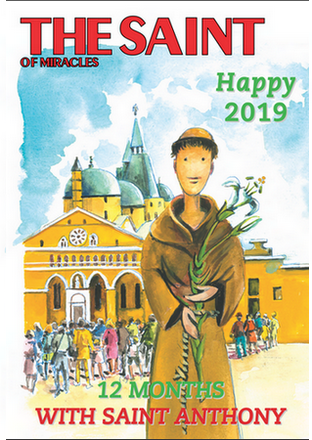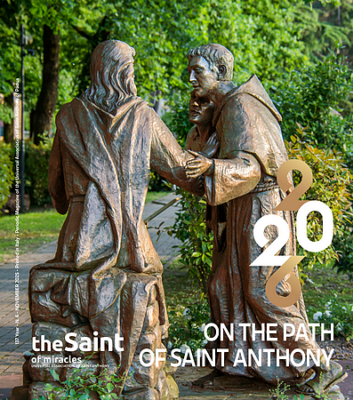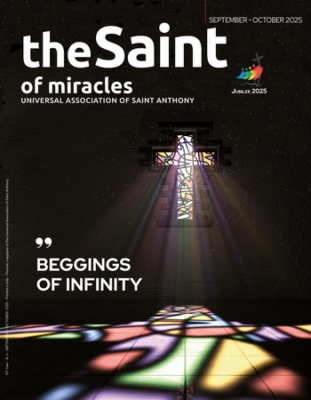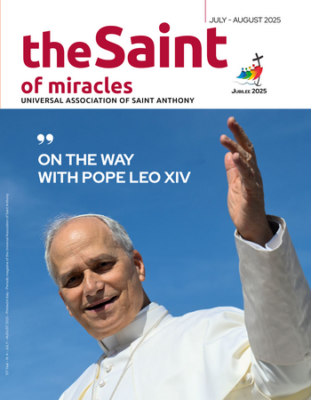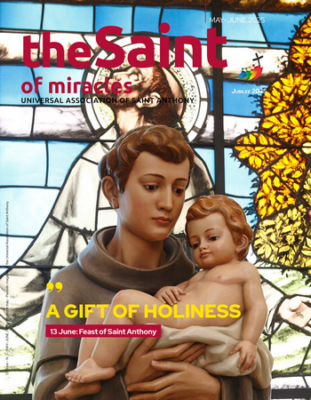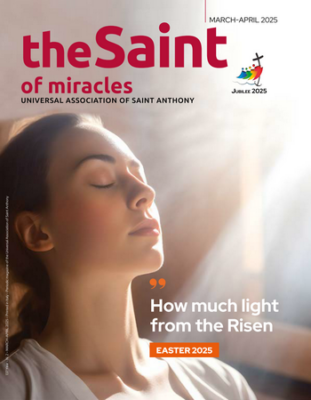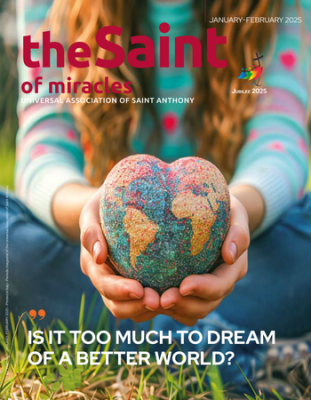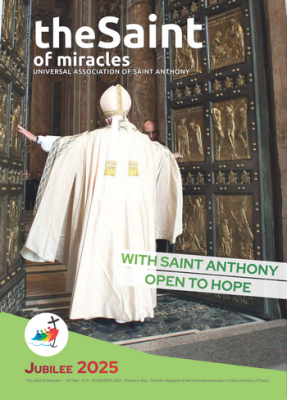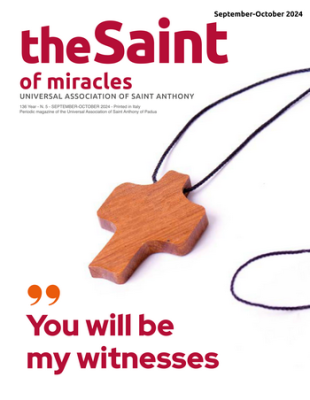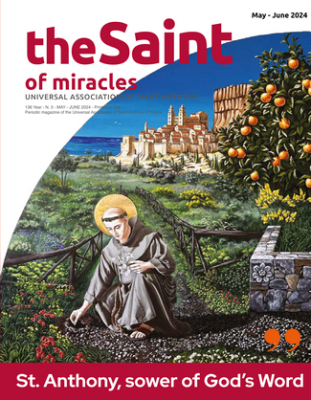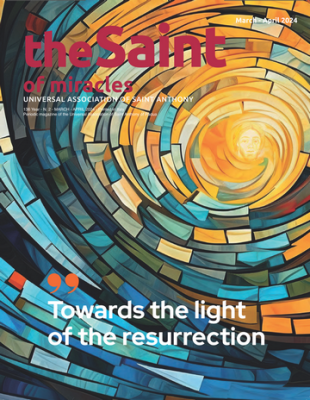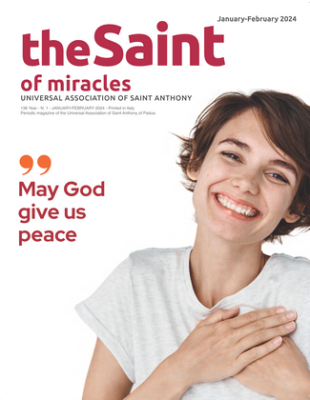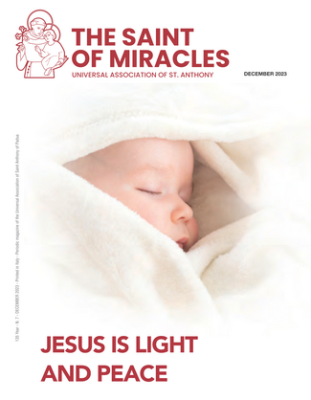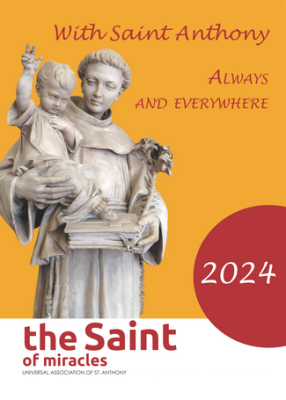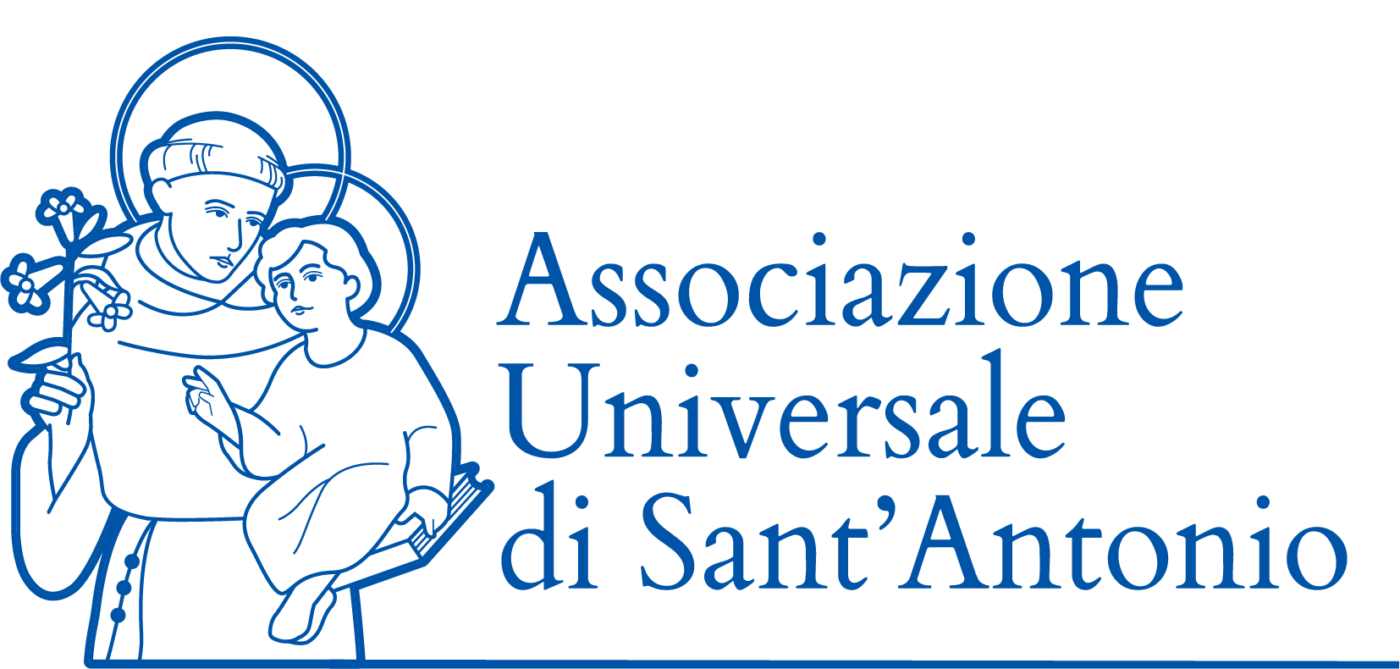Year 130 - November 2018Find out more
On a journey with the Saint
Editorial Staff
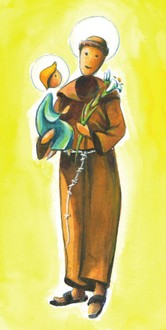 In the city of Padua they simply call him "the Saint". For this reason he is also called "the saint without a name".
In the city of Padua they simply call him "the Saint". For this reason he is also called "the saint without a name".
Many statues and images depict him tall and thin, with a sweet face and light complexion: more probably he was of medium stature, with a sturdy build and dark hair.
In the most usual representations we see him wearing the Franciscan habit (he joined the followers of Francis in 1220), the cord with three knots (symbol of the vows of consecration), the Child Jesus in his arms, holding a lily in his hand. In others he holds a book, a flame or bread in his hand.
The presence of the lily means the purity of the Saint, but also his thaumaturgical power (working miracles!).
The Child refers to a vision, one of the most famous episodes in the life of the Saint. The Liber miraculorum tells us that during the preaching in a city (in Camposampiero, according to tradition), Antonio is hosted by a local nobleman (Count Tiso). While the Saint is secluded in prayer, from a window the nobleman sees him with a smiling child in his arms, embraced by a light. «That child was the Lord Jesus... After the long prayer, after the vision disappeared, the Saint called Count Tiso and forbade him to manifest to anyone, as long as he was alive, what he had seen. After the passing of the holy father, that man told the episode with tears, swearing on the Bible that he was telling the truth».
The bread recalls the Saint's charity towards the poor (this is the origin of the Bread for the Poor Charity Institution). Similarly, the flame refers to the ardor of charity. The book, held in his hands and shown, reminds to his love for the Holy Scriptures.
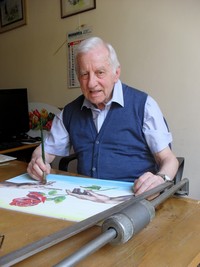 The author of the illustrations for the Anthonian Calendar 2019 is the artist Luigi Zonta (in the photo). Born in Romano d'Ezzelino (Vicenza) on 25 April 1936, in 1947 he entered the graphic school of Colle Don Bosco (Turin) as a student. In 1952, when he became a Salesian, he remained in that school, as a teacher of graphic design until 1990.
The author of the illustrations for the Anthonian Calendar 2019 is the artist Luigi Zonta (in the photo). Born in Romano d'Ezzelino (Vicenza) on 25 April 1936, in 1947 he entered the graphic school of Colle Don Bosco (Turin) as a student. In 1952, when he became a Salesian, he remained in that school, as a teacher of graphic design until 1990.
During this period he was able to deepen and perfect his passion for illustrative drawing and painting, obtaining a diploma at the Art Institute of Lucca in the decorative painting section.
Later he had the opportunity to express himself in several wall paintings in tempera: Bardolino, parish church of San Giacomo di Romano (Vicenza), Caselette, Turin, Caserta, Foggia, Cerignola, Soverato, Salesian chapels of Cogne, Borgomanero, Cumiana and Rivoli.
He moved to the Salesian publisher Elledici in 1990 and worked in the design sector on numerous editions of the same, and therefore on illustration and advertising.
His favourite pictorial form is the decorative one, which is also the most imaginative and creative, in which, with compositional freedom, it is possible to create forms and colours with rhythmic variations typical of today's painting. Description and synthesis can be combined and convey original messages of considerable pictorial impact.


 Italiano
Italiano Français
Français